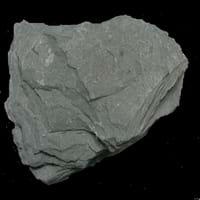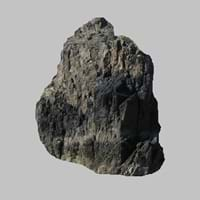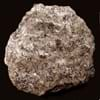Definition
Slate is a fine-grained, foliated, homogeneous metamorphic rock derived from an original shale-type sedimentary rock composed of clay or volcanic ash through low-grade regional metamorphism
Cataclasite is a type of cataclastic rock that is formed by fracturing and comminution during faulting. It is normally cohesive and non-foliated, consisting of angular clasts in a finer-grained matrix
Origin
England
Swiss Alps, Europe
Discoverer
Unknown
Michael Tellinger
Etymology
From Old French esclate, from esclat (French éclat)
From the Italian word cataclasi
Class
Metamorphic Rocks
Metamorphic Rocks
Sub-Class
Durable Rock, Medium Hardness Rock
Durable Rock, Medium Hardness Rock
Group
Not Applicable
Not Applicable
Other Categories
Fine Grained Rock, Opaque Rock
Fine Grained Rock, Opaque Rock
Color
Black, Brown, Buff, Green, Light to Dark Grey, Purple, Red, Shades of Blue
Brown, Green, White, Yellow
Durability
Durable
Durable
Appearance
Dull
Dull and Banded
Interior Uses
Bathrooms, Decorative Aggregates, Entryways, Floor Tiles, Flooring, Homes, Hotels, Interior Decoration, Kitchens, Stair Treads
Decorative Aggregates, Homes
Exterior Uses
As Building Stone, As Facing Stone, Garden Decoration, Paving Stone
As Building Stone, As Facing Stone, Paving Stone
Other Architectural Uses
Curbing
Curbing
Construction Industry
As Dimension Stone
As Dimension Stone, Building houses or walls, Cement Manufacture, Construction Aggregate, for Road Aggregate
Medical Industry
Not Yet Used
Not Yet Used
Antiquity Uses
Artifacts, Monuments, Sculpture, Small Figurines
Artifacts
Commercial Uses
Blackboards, Commemorative Tablets, Laboratory bench tops, Standard material for the bed of Billiard table, Standard material for the beds of Pool and Snooker table, Tombstones, Used in aquariums, Writing Slates
Commemorative Tablets, Creating Artwork
Types
Not Available
Protocataclasite, Mesocataclasite, Ultracataclasite and Foliated cataclasite
Features
Easily splits into thin plates, Surfaces are often shiny, Very fine grained rock
Easily splits into thin plates, Is one of the oldest rock
Archaeological Significance
Monuments
Used
Not Yet Used
Famous Monuments
Data Not Available
Not Applicable
Sculpture
Used
Not Yet Used
Famous Sculptures
Data Not Available
Not Applicable
Figurines
Used
Not Yet Used
Formation
Slate is a low grade metamorphic rock that is generally formed by metamorphosis of mudstone or shale, under relatively low pressure and temperature conditions.
Cataclasiste rocks mainly form by pressure deep under the Earth's surface, from the extreme heat caused by magma or by the intense collisions and friction of tectonic plates.
Mineral Content
Apatite, Biotite, Chlorite, Feldspar, Graphite, Hematite, Kaolinite, Magnetite, Pyrite, Tourmaline, Zircon
Albite, Apatite, Augite, Biotite, Calcite, Enstatite, Epidote, Feldspar, Micas, Muscovite or Illite, Pyroxene, Quartz
Compound Content
Aluminium Oxide, CaO, Iron(III) Oxide, Potassium Oxide, MgO, Sodium Oxide, Silicon Dioxide, Titanium Dioxide
Silicon Dioxide
Types of Metamorphism
Burial Metamorphism, Cataclastic Metamorphism, Regional Metamorphism
Not Applicable
Types of Weathering
Biological Weathering, Chemical Weathering, Mechanical Weathering
Mechanical Weathering
Types of Erosion
Coastal Erosion, Glacier Erosion, Water Erosion, Wind Erosion
Coastal Erosion, Wind Erosion
Grain Size
Very fine-grained
Fine Grained
Streak
Light to dark brown
Black
Porosity
Less Porous
Less Porous
Compressive Strength
Not Available
Cleavage
Slaty
Not Available
Toughness
1.2
Not Available
Specific Gravity
2.65-2.8
2.1
Transparency
Opaque
Translucent to Opaque
Density
2.6-2.8 g/cm3
2.9-3.1 g/cm3
Specific Heat Capacity
Not Available
Resistance
Heat Resistant, Impact Resistant, Pressure Resistant, Wear Resistant
Heat Resistant, Impact Resistant, Pressure Resistant
Deposits in Eastern Continents
Asia
China, India, Turkey
China, India, Russia, Saudi Arabia, South Korea
Africa
Not Yet Found
Egypt, Ethiopia, Kenya, Madagascar, Morocco, South Africa
Europe
Belgium, France, Germany, Italy, Norway, Portugal, Spain, United Kingdom
England, Finland, France, Spain, United Kingdom
Others
Arctic
Not Yet Found
Deposits in Western Continents
North America
USA
Canada, USA
South America
Brazil
Argentina, Colombia
Deposits in Oceania Continent
Australia
Not Yet Found
Central Australia, Western Australia
All about Slate and Cataclasite Properties
Know all about Slate and Cataclasite properties here. All properties of rocks are important as they define the type of rock and its application. Slate and Cataclasite belong to Metamorphic Rocks.Texture of Slate is Foliated whereas that of Cataclasite is Clastic. Slate appears Dull and Cataclasite appears Dull and Banded. The luster of Slate is dull while that of Cataclasite is vitreous. Slate is available in black, brown, buff, green, light to dark grey, purple, red, shades of blue colors whereas Cataclasite is available in brown, green, white, yellow colors. The commercial uses of Slate are blackboards, commemorative tablets, laboratory bench tops, standard material for the bed of billiard table, standard material for the beds of pool and snooker table, tombstones, used in aquariums, writing slates and that of Cataclasite are commemorative tablets, creating artwork.










